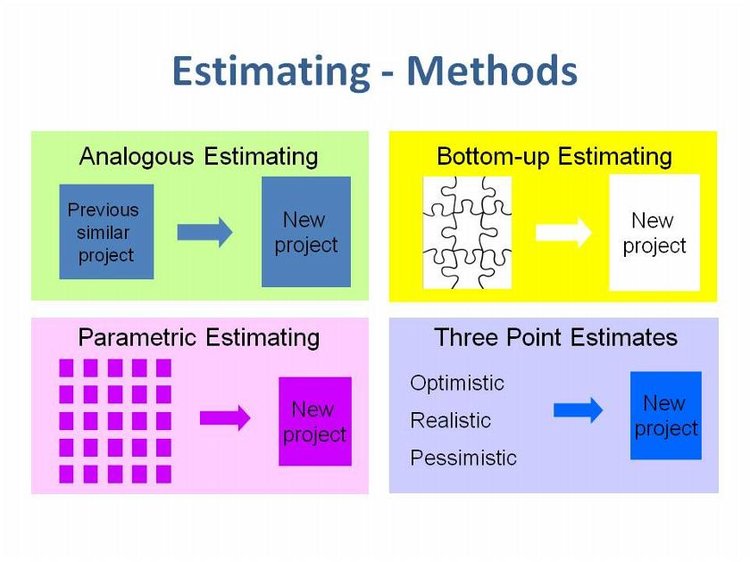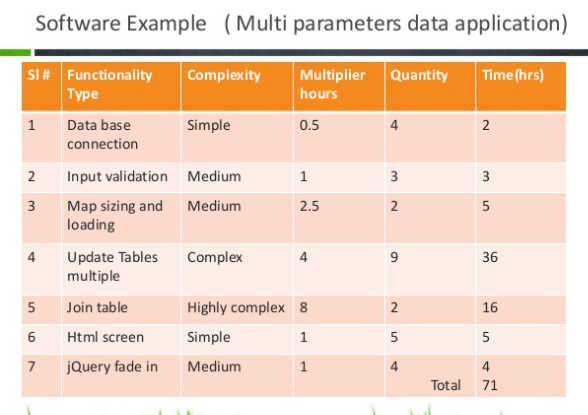If you've had an estimate for construction or an IT overhaul at your office, then it's likely contractors gave you a parametric estimate. Project leaders apply statistical formulas for many project types to assess the feasibility, scope, and overall cost or duration.
Inexact time or budget estimations can affect nearly every aspect of your project, leading to dissatisfied clients or stakeholders. You can reduce the risk of inaccuracies by using parametric estimating for all or portions of a project's tasks.
Learn how parametric estimating can calculate the time and funds required for your next project.
Overview: What is parametric estimating?
Parametric estimating applies a formula or algorithm to calculate the cost or time needed to implement and finish a whole project or specific task. It uses historical and statistical data to deliver accurate estimations based on the relationship between variables.
Business owners use parametric estimating during the scope management or planning phases or mid-project if changes require an updated estimate. Once you create a formula, you can use it as a template to model future plans.
The parametric method consists of:
- Task or part: Project managers break down a plan into sections or steps, such as worksite prep, installation, and testing.
- Parameter: This is the unit being measured, such as the number of endpoints or size of an office building.
- Cost per parameter unit: The cost to complete the task is based on averages of historical, industry, or market data.
- Time per parameter unit: The average time you spend to complete an activity is based on past projects or publicly available data.
- Parameter value: This represents the number of parameter units for calculation purposes, such as 25 endpoints or 2,000 square feet.
A basic equation looks like this:
Cost (or Time) per Parameter x Parameter Value = Estimated Project Cost (or Time)
Parametric estimating vs. analogous estimating: What's the difference?
Both parametric estimating and analogous estimating use historical data to make a calculation. These calculations are one of several project estimation techniques, which also include three-point estimating.
However, analogous cost estimating is more of a judgment call based on similarities between projects. In contrast, parametric estimating defines a correlation between two or more variables. While analogous estimating represents an analogy, parametric estimating uses a unit value.

Each of these four estimating techniques may play a role in project planning and management. Image source: Author
Parametric method example
Let's say your project is to install new antiviral software on 105 desktops, routers, and outdated devices at your client's location. You may have a fixed price for the software cost but need to estimate the time duration and installation cost.
With the number of devices and other variables determined, you may identify anomalies related to increased resource use.
For example, based on historical data, you know it takes 30 minutes per device. If you used analogous cost estimating, you'd multiply the 105 devices by 30 minutes to get an estimate of 3,150 minutes or 52 hours, 30 minutes.
However, your team can install software on routers 5% faster than a computer installation, but outdated operating systems require 15% more effort. So, you may break down your estimate accordingly to get an accurate appraisal. Your data looks like this:
- 75 office desktops x 30 minutes = 37 hours, 30 minutes
- 5 modems or routers x 28.5 minutes (time per parameter minus 5%) = 2 hours, 22.5 minutes
- 25 devices needing updates x 34.5 minutes (time per parameter plus 15%) = 14 hours, 22.5 minutes
The sum of the total time needed for installation is 54 hours, 15 minutes. At $100 an hour, estimating your time with the parametric method results in a bid that's $175 higher than an analogous estimation.

This parametric estimation shows how using different parameters provides more accurate time calculations. Image source: Author
3 benefits of parametric estimating
The parametric method can be used alone or alongside other estimating techniques while planning a project. Its accuracy and flexibility mean you can create a model to fit many situations, from client work to planning capital investments.
1. Save time on repetitive processes
If your business frequently provides services requiring similar activities, such as installing software, you can use parametric estimating to calculate your task-level costs or time quickly.
Once you have a formula, it's easier to input the variables from a new project and get a clear answer. Moreover, various project management software tools can further simplify this process by giving you access to databases with industry benchmarks for more accurate estimates.
2. Get flexible yet precise estimates
With parametric estimating, you're basing your figure off hundreds or thousands of data points. You can also adjust your calculations for a learning curve or regression analysis. For instance, you may notice that some projects take much longer than expected.
By doing a regression analysis, you discover a few key characteristics of clients that result in a longer duration. Clients with extensive approval processes may add 10% to your project timeline, or L-shaped buildings may increase installation times.
Or you may notice time improvements as your team gains experience. This reduces time spent, which you can factor into your formula.
3. Improve project management budgeting
Parametric estimating isn't limited to a particular stage in the project life cycle.
It's used in the early phases of scope management to determine the feasibility of your project. During the planning stages, parametric estimates help you reduce downtime with efficient scheduling. Lastly, if there are changes needed during a project, you can quickly recalculate based on your new parameters.
How to perform parametric estimating in your projects
Typically, parametric estimating requires more resources than other estimating techniques. It's commonly used in engineering, construction, and life sciences professions. However, you can use parametric estimating to determine how much to charge for a copywriting project or website build.
Several project management methodologies benefit from the use of parametric estimating. For instance, if you're using the stage-gate process, also known as the phase-gate process or waterfall method, statistical calculations support task-level objectives.
If you're interested in how parametric estimating factors into advanced project management methods, here are two resources:
- The Project Management Institute (PMI): A Guide to the Project Management Body of Knowledge (PMBOK® Guide)
- The International Society of Parametric Analyst: Parametric Estimating Handbook
Get started with parametric estimating by following these general guidelines.
1. Figure out which parts require parametric estimations
Before starting a project, break it down into various sections. At each stage, there's time and money involved. In some cases, parametric estimating may make more sense than other methods. Consider:
- Do you need a rough or definitive estimate?
- Is there a connection between a parameter and time or cost?
- Do you have historical data for your parameter?
Refer to your work breakdown structure (WBS) to decide which components lend themselves to parametric estimations.
2. Determine the scope of calculations
Figuring out the scope is one of many project manager responsibilities. For parametric estimating, you need to:
- Document all known variables for the activity.
- Identify the baseline variables.
- Find the critical cost drivers.
- Fill in information gaps.
3. Gather data
For your estimate to be accurate, you must start with reliable data. Internal data compiled from project management software and other programs provide details about the time required for different tasks.
Depending on your industry, you may have access to industry benchmarks and publications or public statistics for use in calculations as well. At a minimum, you need information for your baseline or essential variables.
4. Identify correlations
Once you've created data sets, you can analyze your information to see how the variables relate. For instance, you may notice that the average time duration differs by building size, device number, or operating system.
With this information, you can create your model or formula listing the variables and parameter values for accurate calculations.
Use cost estimating to improve project management
Estimating projects is time-consuming, but project management techniques can improve your workflow. Project managers use parametric, analogous, or three-point estimating for task-level calculations and often top-down or bottom-up methods for project-level estimations. By selecting the best process for your activities and projects, you can ensure project profitability and streamline the cost estimation process.
Our Small Business Expert
We're firm believers in the Golden Rule, which is why editorial opinions are ours alone and have not been previously reviewed, approved, or endorsed by included advertisers. The Ascent does not cover all offers on the market. Editorial content from The Ascent is separate from The Motley Fool editorial content and is created by a different analyst team.